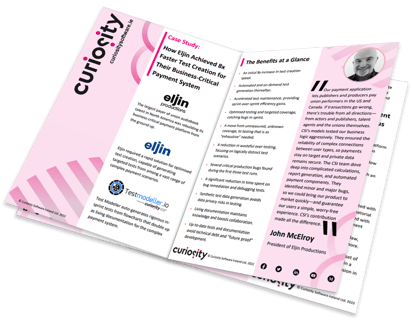Don't have time to model? Think again.
With Test Modeller, modelling is:
-
Rapid, using a range of importers, an object scanner, and UI Recorder to completely capture complex systems in-sprint.
-
Reliable, catching potentially costly design defects before they can reach development and be perpetuated in code.
-
Easy-to-use, with simple BPMN-style modelling and a drag-and-drop approach to quickly assemble models from re-usable components.
-
Collaborative, using shared requirements models to drive testing and development, keeping business and IT stakeholders aligned.
-
“Active”, with flowchart models capable of directly generating test cases, data, and automated tests.
-
Reactive, using visual models to incorporate new user stories rapidly, quickly spotting their impact on existing systems and generating rigorous tests to validate any changes made.
8X Faster Test Creation At Eljin Productions
Learn How Models Drive Rigorous Testing at Eljin
Discover the benefits Eljin Productions achieved when using Test Modeller to successfully launch a business-critical payments platform using model-based test generation and synthetic test data generation.
Better Design. better code. better tests.
Test Modeller quickly captures new or existing functionality as easy-to-maintain flowchart models, from which a comprehensive set of tests can be generated and executed automatically.
|
Agile Requirements Modelling With Test modeller:
|
Hand-Written User Stories With Diagrams:
|
|---|---|
|
|
2. Clear and Complete Designs Drive Test and Development:
|
|
|
|
|
|
|








